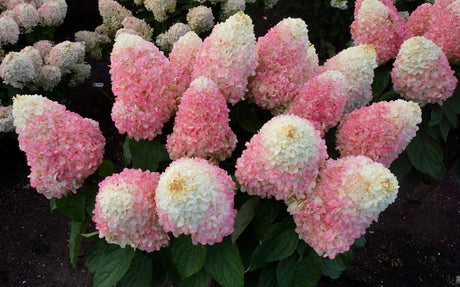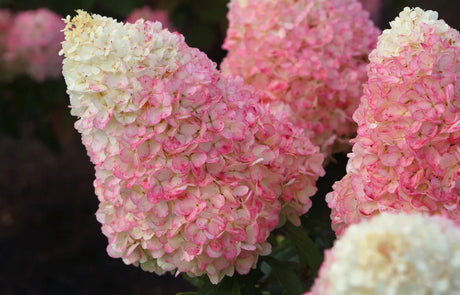- Regular price $4814Unit price /Unavailable
- Regular price $5043Unit price /Unavailable
- New arrival
WorryFree® Ruby Snow Panicle Hydrangea
Regular price $7400Unit price /Unavailable - New arrival
WorryFree® Winter Torch Willow
Regular price $5686Unit price /Unavailable - Sold out
WorryFree® Love-A-Lot™ Pink Hydrangea
Regular price $7400Unit price /Unavailable WorryFree® Ruby Snow Hydrangea Tree
Regular price $11999Unit price /Unavailable
FAQS for Buying WorryFree® Online
What makes WorryFree® Barberries different from older barberry varieties on the market?
What makes WorryFree® Barberries different from older barberry varieties on the market?
Traditional Japanese barberries can drop thousands of viable seeds each year, allowing them to invade woodlands. Breeders created the WorryFree® line by selecting sterile, non‑fruiting plants and then trialing them for several seasons to confirm < 2 % viable seed set. Only selections that paired sterility with intense foliage color and compact habit advanced to production. This means gardeners still enjoy the vibrant reds, oranges, and chartreuse tones barberries are famous for—but without the ecological risk or legal restrictions found in several states.
Which USDA hardiness zones and site conditions are ideal for growing WorryFree® Barberries?
Which USDA hardiness zones and site conditions are ideal for growing WorryFree® Barberries?
The series is hardy in Zones 4 – 7, surviving winter lows to ‑25 °F. It performs best in full sun, where pigments intensify, but tolerates light afternoon shade in hotter Zone 7 climates. Any well‑drained soil—loam, sand, or even rocky fill—works because barberries possess drought‑tough, fibrous roots. Avoid water‑logged clay; prolonged saturation can suffocate roots. By matching zone, sun, and drainage, you secure vibrant foliage and long‑term plant health with minimal intervention.
How should I plant WorryFree® Barberries to ensure rapid establishment and season‑long color?
How should I plant WorryFree® Barberries to ensure rapid establishment and season‑long color?
1) Loosen the top 10 in. of native soil and blend in 2 in. of compost for drainage and nutrients. 2) Dig a hole twice the pot width and set the crown 1 in. above grade to prevent rot. 3) Back‑fill, firm gently, and water until soil is saturated. 4) Apply a 2‑in. mulch ring, keeping it 2 in. from stems, to moderate temperature and suppress weeds. 5) Water when the top 2 in. of soil dries during the first growing season; established plants need irrigation only in prolonged drought. This five‑step sequence minimizes transplant shock and channels energy into leaf pigment production rather than survival stress.
Do WorryFree® Barberries require regular pruning, and if so, what technique maintains their natural form?
Do WorryFree® Barberries require regular pruning, and if so, what technique maintains their natural form?
Because the cultivars mature at just 2 – 4 ft tall, heavy shearing is unnecessary. Each late winter, remove any dead or crossing branches first; then shorten overly long shoots by one‑third, cutting just above an outward‑facing bud. This thinning approach preserves the arching, fountain‑like habit while stimulating fresh growth that carries the brightest foliage. If a formal hedge is desired, a light summer shear after the first flush keeps lines crisp without exposing bare wood.
Are WorryFree® Barberries truly low‑maintenance and deer‑resistant, and what routine care keeps them looking their best?
Are WorryFree® Barberries truly low‑maintenance and deer‑resistant, and what routine care keeps them looking their best?
The same alkaloid compounds that give barberries their distinctive scent deter deer and rabbits, so browsing damage is rare even in high‑pressure areas. Once established, the shrubs tolerate drought, urban pollution, and reflected heat, requiring only an annual mulch refresh and a spring application of balanced slow‑release fertilizer. By combining innate pest resistance with modest water and nutrient needs, WorryFree® lives up to its name—delivering season‑long color with little more than a yearly check‑up.











